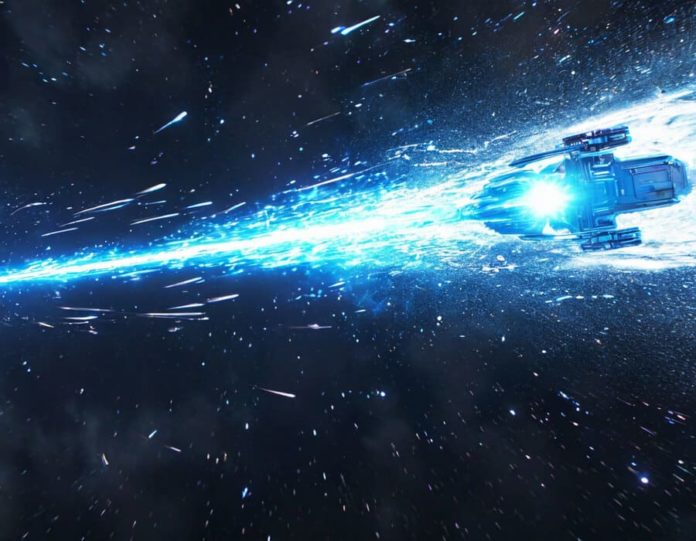Dark energy is one of the greatest mysteries in modern astrophysics. It makes up about 68% of the universe, yet its nature remains elusive. Dark energy is believed to be responsible for the accelerated expansion of the universe, but its exact properties are still unknown. Understanding dark energy requires observations that go beyond the capabilities of ground-based telescopes, and this is where space telescopes come in. Space telescopes have played, and will continue to play, a critical role in uncovering the secrets of dark energy.
Before diving into the role of space telescopes, it’s important to understand what dark energy is. In the 1990s, astronomers discovered that the universe is not only expanding but that its expansion is accelerating. This surprising finding led to the hypothesis that some unknown form of energy—now called dark energy—is driving this acceleration.
Dark energy is thought to have a repulsive force that counters gravity, causing galaxies to move apart at an increasing rate. However, its exact nature remains unclear. Some theories suggest it could be a new field or force, while others propose that it’s a property of space itself.
Why space telescopes are crucial
Observing dark energy requires looking at distant galaxies and supernovae, which are billions of light-years away. The light from these objects can be distorted or obscured by the Earth’s atmosphere, making ground-based telescopes less effective for these observations. Space telescopes, located above the Earth’s atmosphere, can capture clearer and more accurate data, making them essential tools for studying dark energy.
1. Hubble Space Telescope
The Hubble Space Telescope (HST) has been one of the most influential space telescopes in the study of dark energy. In the late 1990s, observations from Hubble helped confirm the accelerated expansion of the universe by measuring the distances and redshifts of Type Ia supernovae. These supernovae serve as “standard candles” because their intrinsic brightness is well understood, allowing astronomers to measure cosmic distances accurately.
By observing how these supernovae appeared dimmer than expected, Hubble contributed to the discovery that the expansion of the universe was accelerating—a key piece of evidence for the existence of dark energy. Hubble continues to provide data on distant galaxies and supernovae, improving our understanding of dark energy’s effects over time.
2. Euclid Space Telescope
The European Space Agency’s Euclid Space Telescope, launched in 2023, is specifically designed to study dark energy and dark matter. Euclid will create a 3D map of the universe by observing billions of galaxies, charting how structures like galaxies and galaxy clusters have formed over time. By analyzing this data, scientists hope to better understand how dark energy has influenced the evolution of the universe.
Euclid’s ability to measure the shape, position, and distance of galaxies with high precision will allow astronomers to study how the expansion rate of the universe has changed over billions of years. This will provide critical insights into the behavior of dark energy.
3. Nancy Grace Roman Space Telescope
NASA’s Nancy Grace Roman Space Telescope (formerly known as WFIRST) is another upcoming mission that will have a significant impact on our understanding of dark energy. Scheduled to launch in the mid-2020s, the Roman Space Telescope will use a combination of wide-field imaging and spectroscopy to explore the effects of dark energy on the universe’s expansion.
One of its primary goals is to study weak gravitational lensing—where light from distant galaxies is slightly bent by the gravity of intervening matter. By measuring how light from galaxies is distorted by this lensing effect, the Roman Space Telescope will provide information on the distribution of dark matter and the influence of dark energy.
Additionally, the Roman Space Telescope will conduct a detailed survey of Type Ia supernovae, similar to the work done by Hubble, but with greater accuracy and over a wider range of distances. This will help refine estimates of the expansion rate of the universe and dark energy’s role in it.
4. James Webb Space Telescope (JWST)
The James Webb Space Telescope (JWST), launched in December 2021, is designed to observe the early universe with unprecedented sensitivity. While its primary mission is to study the formation of stars and galaxies, JWST will also contribute to dark energy research by examining the large-scale structure of the universe.
JWST’s ability to observe extremely distant galaxies—those formed shortly after the Big Bang—will provide crucial data on how dark energy has shaped the universe’s expansion throughout its history. By studying these early galaxies, JWST can help build a more comprehensive picture of how dark energy has influenced the universe over time.
The future of dark energy research with space telescopes
As new space telescopes are launched and existing ones continue their missions, our understanding of dark energy is likely to grow. While we are still far from a complete explanation of dark energy, each new observation brings us closer to unraveling this cosmic mystery.
Future missions like the LuSEE-Night (Lunar Surface Electromagnetics Experiment) and LiteBIRD (a cosmic microwave background telescope) may also contribute to dark energy research, as they focus on the universe’s earliest moments and the potential quantum effects linked to dark energy.
Space telescopes are essential tools in the quest to understand dark energy. From Hubble’s pioneering observations of supernovae to the specialized missions of Euclid and the Roman Space Telescope, these advanced instruments allow scientists to explore the universe in ways that ground-based telescopes simply cannot. With every new mission and each new discovery, space telescopes bring us one step closer to understanding the fundamental forces that shape our universe—including the mysterious dark energy driving its expansion.













